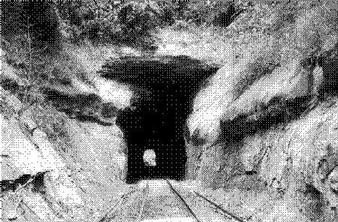

The railroad ceased regular operation in 1928 after the opening of the large Borax mine near Boron California. An attempt was made to operate the line as a tourist railroad but without success. The railroad was finally torn up in 1931.



Much of the railroad ran parallel to what is today State Route 190. After this railroad ceased operations, the United States Potash Company bought the equipment, track and rolling stock to construct their own line located near Loving, New Mexico, which became the United States Potash Railroad. All the rails from the Death Valley Railroad were used on the new line till about 1941 when they were replaced by heavier-pound rails from the Atchison, Topeka & Santa Fe Railroad. The line was used till 1967 when better potash deposits were discovered in Saskatchewan and Pacific Coast Borax Company merged with U.S. Potash and became U.S. Borax & Chemical Cooperation.
No. 1 was sent to Carlsbad, New Mexico and put on display in between Park Drive and E. Riverside Drive and sports the bold lettering of "U.S. Potash" on the sides of her tender.
No. 2 also worked for the United States Potash Railroad, but she was bought by the Death Valley National Park and is now currently at the Borax Museum at Furnace Creek.
A railcar was bought in the later years of the line in 1928, when Pacific Coast Borax attempted to save their dying railroads, DVRR included, from the scrapheap by promoting them as tourist attractions. She too, was bought by the United States Potash Railroad to transport workers to the potash mines. But by 1967, she was worn out but luckily, the Laws Rail Museum of Bishop, California managed to step in just in time to save her from scrap. After several years of extensive restoration, it now runs happily on the museum's 3 ft (914 mm) narrow gauge track.
As for the 'Francis', the ex-Borate and Daggett Railroad Heisler locomotive that aided in the construction of the line and was reportedly used for shunting ore trains at Ryan, she was sold off to the Nevada Short Line Railway in 1916 and later on to the Terry Lumber Company (later Red River Lumber Company) to work the private 3ft gauge logging line from Round Mountain, California. But in 1925, the lumber mill burned down, forcing the railroad to be closed and abandoned and Francis's fate was left unknown, as she disappeared with no records being found of her being scrapped or moved anywhere else at all. It is possible that she could still be somewhere on the property of the old mill.





































